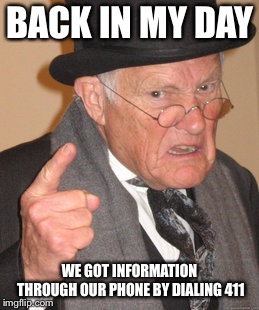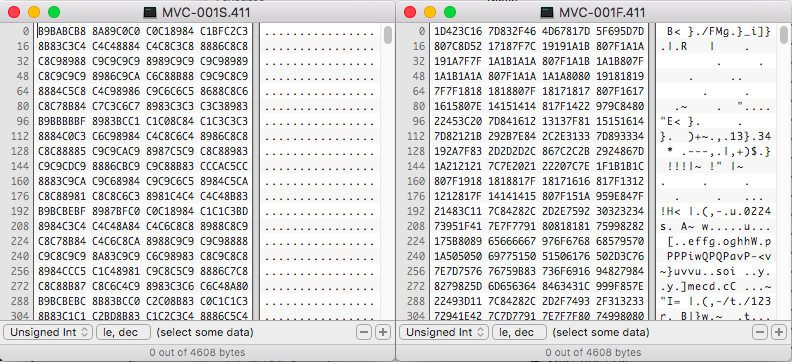I am dating myself by using the phrase “What’s the 411?” Back in my day (before the Googles), if you wanted quick information you could pick up the “land line”, a corded phone in your home which could only make phone calls, and dial 4-1-1 and you would be connected to an operator that could help you locate businesses, tell you the time, answer simple questions, and was infinity smarter than Alexa.

Around the same time I was using 4-1-1 to answer all my questions, digital camera’s were just coming on the scene. One of those was the Sony Mavica line of digital camera’s. They were unique as they used a floppy disk as the storage media. They had a small LED screen for capture and playback of the captured images. In order to quickly preview the images captured on disk, the camera generates a hidden thumbnail file for each image, this file has the extension .411. When I first saw this file when I copied a floppy from my Mavica cameras, it reminded me of the old information line. I first assumed it was a metadata file as the first few Mavica camera did not use EXIF in their files, but they are simply a raster image in a 64×48 pixel file. Of course Sony did not document this file format and probably hoped no one would noticed as they are hidden on the floppy FAT12 formatted disk.
One could argue the value of documenting and possibly identifying thumbnail formats as many in digital preservation have chosen not to keep the Thumbs.db file or other hidden files not meant to be preserved or accessible to the user. I have found documenting any format found through technical appraisals provides value to everyone, which may ultimately determine not to keep such formats in their repository, but knowing what they are is vital to the process. Come listen and chat with me about this topic at iPres 2023!
Usually the first part of documenting a format is looking for specifications online or documented somewhere. Since Sony did not publicly release any specifications for this format, we have to use others reverse engineering or do so ourselves. There have been a few attempts to document a conversion of the 411 format to a common raster format like BMP. Like this C code for conversion to BMP, or to NetPBM formats like PPM, or the Java “Javica” software which makes use of the 411 files. My first step was to see if we could find some common patterns in the many samples I have from my Mavica collection. Running Marco Pontello’s TrIDScan, across my 54 samples came up with no common patterns, this was expected as all the reverse engineering efforts points out the format is probably based on the CCIR.601 specification which is MPEG based on frames.

With no common patterns among all the samples, creating a PRONOM signature is not possible. In the future, file identification may be based more on dynamic pattern matching instead of the current static patterns we look for now. Until then, this may need to be submitted as an extension only entry. Two things to note, the files created by the camera are all named starting with “MVC” which could also be used for identification. You may also notice that every .411 file is exactly 4608 bytes. The extension .411 is also pretty unique, so I doubt it will clash with any other format for the moment.